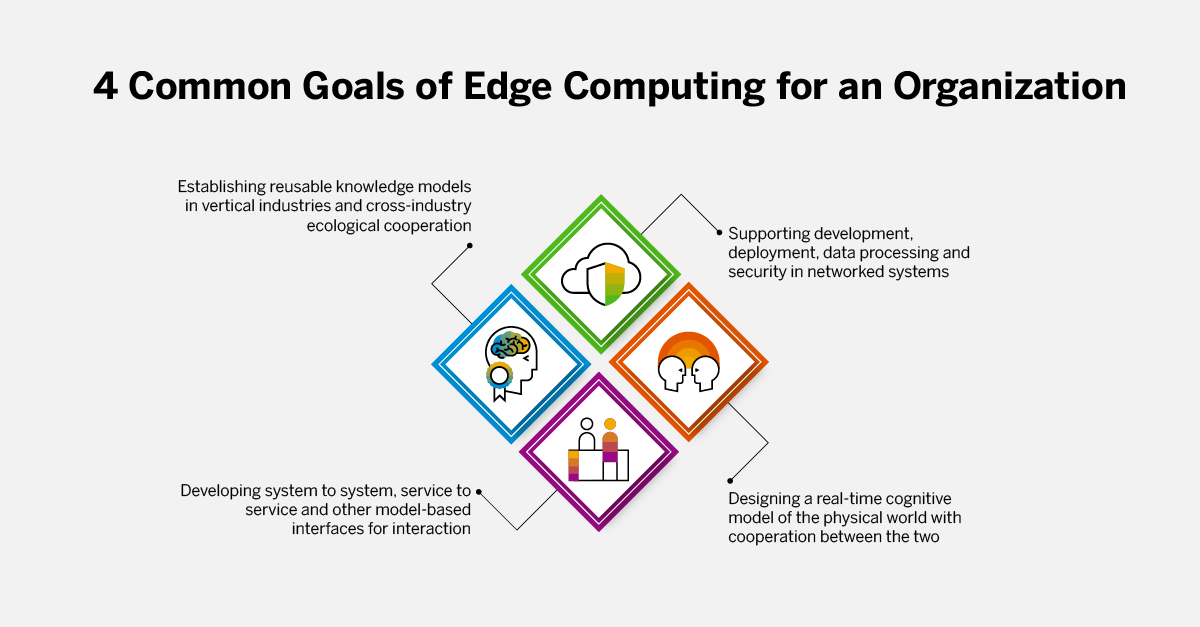In the digital age, data transaction within and between organisations has become indispensable to do business. By leveraging the right business intelligence tools, organizations can ensure instant and safe exchange of information between devices. A well-managed data transition and exchange system provides actionable business intelligence, enables real-time control of crucial processes, and helps achieve optimum levels of efficiency.
However, conventional modes of data distribution and management can be overburdened while dealing with large volumes. With a centralized data center and bandwidth limitations, the traditional model is not suitable for today’s fast-paced digital-first world. This is where edge computing architecture can help businesses.
Simply put, edge computing relocates storage and compute resources away from the central data center and closer to the data source. Instead of sending raw data to the main data center for processing and analysis, this work is done where the data is created, whether in a retail store, a factory floor or a large utility. Any place with a human or machine connection that requires a quick reaction to changing conditions becomes an edge. Edge computing devices – such as sensors, instruments, cameras and other hardware – are the other players in a system designed to make decisions in real-time.
Why is edge computing necessary?
According to Gartner, 75% of enterprise-generated data will be created outside centralized data centers by 2025. IDC also says that by 2023, more than half of the new enterprise IT infrastructure will be deployed at the periphery rather than in corporate data centers. The prospect of transmitting so much data in situations where time or interruption is critical, places an enormous demand on the global internet, already prone to congestion and disruption.

Edge computing allows for reduced latency; the time taken for exchange of data between a data center and an end user for taking a decision is significantly reduced. This is possible due to microservices deployed at the Edge. These extend the processing power of the digital core and can:
- compute locally,
- persist without having to communicate with centrally located data centers repeatedly, and
- run business processes at the edge.
At a time when customers have come to expect seamless, real-time, omnichannel interactions in the digital world, faster response times can make or break a deal. No wonder then, that during the past year, 56 percent users of edge computing stated that reduced latency was one of the most important factors that persuaded them to adopt this technology.

How edge computing makes systems autonomous
With IoT becoming ubiquitous, a large volume of data is generated on a daily basis. Edge computing allows devices to store, analyze and process this data autonomously. The autonomous nature of edge computing is further enhanced through mobility support. An example of this is the Locator ID Separation Protocol (LISP), which decouples the location identity from the host identity. Instead, it implements a distributed directory system, thus allowing the system to communicate with mobile devices directly.
Using Edge Computing Nodes (ECNs), edge computing can bridge the gap between the physical world and the digital world. When ECNs act as smart gateways for systems, assets and services, the dense network of modern edge computing frameworks can carry out autonomous business processes.
Thus, users and businesses can leverage the efficiencies of cloud computing while benefiting from locality. This is used even in critical tools like fog-based vehicular safety applications and edge-based disaster management systems.
Goals of edge computing
While the frameworks of edge computing systems may be different, depending on how an organization intends to use them, the goals that these systems are designed to achieve are common. These include-
- Effectively supporting development services, deployment operations, data processing and security in networked systems.
- Designing a real-time and systematic cognitive model of the physical world and achieving cooperation between the two.
- Establishing reusable knowledge model systems in each vertical industry and completing cross-industry ecological cooperation.
- Developing system to system, service to service and other model-based interfaces for interaction.

What can edge computing offer to an organization?
Today, data is the new oil. The amount of data generated by devices worldwide has increased from 218 Zettabytes (ZB) in 2016 to 847 ZB in 2021. By efficiently handling enormous volumes of data, edge architecture is becoming an essential part of the corporate IT landscape. In fact, over half of the data traffic in global data centers will have been stored, processed and analyzed on the edge of the networks by the end of this year.
The benefits of edge computing are multiple. However, the core benefits that it affords to the user are-
- Improves speed and performance
Response and analysis times and uptimes can be vastly improved through uninterrupted and seamless data transmission. The data transmission is carried out without having to depend on bandwidth, connectivity, or latency. This enables faster processing and real-time adjustments, leading to seamless production, better customer service and greater profits. The usage data can also be leveraged as input for future maintenance and service strategies.
- Reduces data transmission and communication costs
Spending can be brought down through intelligent data throttling. This means that unnecessary and repeated data transmission processes can be avoided, by storing and analyzing data locally. Computing costs can also be optimized by prioritizing which data to process locally and which data to send back to the digital core. When data transmission is controlled, energy costs are also lowered.
Conventional computing networks require a centralized data center. These data centers are expensive to build, acquire and manage. This becomes a costly operation, especially for small and medium businesses. Even businesses with existing data centers can find it challenging to expand their capacities, upgrade these facilities, or hire larger ones. Edge computing removes the need for building such dedicated centers, and allows resources to be allocated elsewhere.
- Enhances decision-making ability
Edge computing allows the processing and analyzing of data within an intelligent device, even when the resources are not connected to a network. This allows real-time decision-making and agile and adaptable responses.
This also helps identify system issues or potential bottlenecks. For example, real-time analysis of data from IoT sensors can lead to product quality issues being flagged. With the help of alerts and notifications, wastage due to non-conforming or defective assembly of items can also be reduced. The anomaly detection at low latency saves costs and makes the whole environment resilient.
Even complex processes such as enterprise asset management can be executed autonomously at the edge. It also enables the system to pre-process IoT workloads from assets at the edge, helping to conserve bandwidth and manage intermittent connectivity issues. Predictive models can also be executed at the edge to carry out inference.
- Reduces loss of data
Edge computing systems allow safe transmission and storage of data, ensuring that any element in the system does not become a single point of failure. Removing the need for constant data transactions with the central storage core also reduces the risk of losing sensitive data stored there.
These systems also increase productivity by conserving bandwidth and making the system autonomous. This means that even if there are intermittent connectivity issues, the employees can keep doing their jobs.
- Improves security of data
Edge computing can assist in network security and data privacy. Data is spread across the machines that produce it because it is decentralized. Hackers will find it more difficult to gain access to the entire network or compromise all data in a single attack because of this. In the event of a cyberattack, the network’s impacted area can be turned off or limited, resulting in only one device being hacked. This minimizes the susceptibility of other network devices.
- Eliminates excess data
When typical cloud computing designs are used, data accumulates relatively quickly in cloud storage (like data from IoT sensors). Because most of this data is not valuable, businesses waste a lot of money maintaining information they will most likely never utilize. Edge computing can help by just transmitting useful data to the cloud, where it is processed.
- Helps make data analysis faster
Edge computing’s local processing enables higher levels of intelligence to come into the data analytics process from the starting itself. This allows you to generate a more precise set of data and speed up the analysis and decision-making, which would otherwise be deployed later in the process. So, edge computing does away with the possibility that analytics would take longer and be less focused.
When combined with futuristic technologies like 5G, Internet of Things (IoT) and Augmented Reality, edge computing can decentralize traditional IT infrastructure and speed up the transition to the future. Edge computing will also continue to pave the way for new and beneficial services, applications, and use cases as it grows, helping businesses using it to get the competitive edge.



